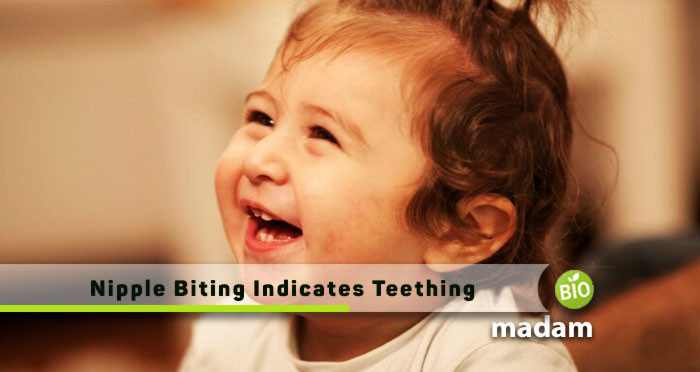The journey of raising a baby is filled with many milestones and challenges. One such challenge that often arises is nipple biting during breastfeeding. This behavior can be perplexing and even painful for moms, but it’s not uncommon and may be related to teething. In this article, we will explore the connection between nipple biting and teething in babies and offer practical strategies to cope with it.
What are the Signs of a Teething Baby?
Teething is a natural process in a baby’s development when their first teeth start pushing through the gums. This typically occurs between the ages of 6 months and 3 years, although it can vary widely from one child to another. Teething can be uncomfortable for babies and is often accompanied by several common signs and symptoms:
Irritability
Teething babies may become fussier and more irritable than usual. They might cry more often and seem generally unhappy.
Excessive Drooling
Increased saliva production is a hallmark of teething. You’ll notice your baby drooling more than usual, which can sometimes lead to a rash on the chin or chest.
Chewing on Objects
Babies often seek relief by chewing on objects to counter pressure against their sore gums. They may gnaw on their fingers, toys, or even your fingers if you let them.
Swollen Gums
The gums around the emerging teeth can become swollen and reddish. You might be able to feel or see a small bump where the tooth is coming in.
Changes in Appetite
Some babies may experience a decreased appetite during teething due to the discomfort. They might be less interested in breast or bottle feeding or eating solid foods.
Sleep Disturbances

Teething discomfort can disrupt your baby’s sleep patterns. They may wake up more frequently during the night or have shorter naps.
Ear Pulling
Babies often tug at their ears when they’re teething. This can be a sign of referred pain from their sore gums.
Cheek Rubbing or Redness
Some babies rub their cheeks or face when they’re teething, possibly as a way to alleviate the discomfort.
Increased Sucking
Babies might suck more on their thumbs, fingers, or pacifiers as a way to find comfort during teething.
Nipple Biting in Babies
Understanding that teething is often accompanied by these signs can help parents navigate nipple biting during breastfeeding more effectively.
- Normal Developmental Behavior: Babies use their mouths to learn about textures, temperatures, and sensations. Biting or chewing is a way for them to explore and understand their surroundings.
- Teething and Nipple Biting: Teething babies are more prone to nipple biting. This is because the counter-pressure of biting on something can provide relief to their sore gums. The act of chewing can soothe the discomfort they’re feeling.
- Differentiating Teething-Related and Non-Teething-Related Biting: It’s important to differentiate between teething-related nipple biting and other reasons for biting during breastfeeding. Non-teething-related biting could be due to hunger, distraction, or a need for comfort.

Coping Strategies
Coping with nipple biting during breastfeeding can be challenging, but effective strategies can help both you and your baby. To ease your baby’s teething discomfort, offer clean and safe teething toys or rings designed for chewing. When your baby bites, gently remove them from your breast and redirect them to a teething toy or a clean finger. If biting continues, break the latch and reattach them correctly. Express your discomfort verbally with a simple “Ouch!” to discourage biting. If the issue persists or causes you pain, consult with a pediatrician or a lactation consultant for personalized guidance and support. These strategies can help navigate this phase and ensure a positive breastfeeding experience for both you and your baby.
Final Verdict
Nipple biting during breastfeeding is a phase that many parents go through with their babies. Recognizing the signs of teething can help you understand why your baby might be exhibiting this behavior. Remember to be patient and use the coping strategies mentioned in this article to ease your baby’s discomfort and maintain a positive breastfeeding experience. It’s a phase that will eventually pass, and with the right approach, you can ensure a comfortable and nurturing feeding journey for both you and your little one.

People call me Domonique Smith in Ross! I was always fond of helping people, so opted an MBBS degree to pursue my passion as my career. My major interests fall in dealing with pregnant ladies and helping them in the best of my wills for their comfort. I am further planning to choose Gynecology as my major, so wish me luck!

